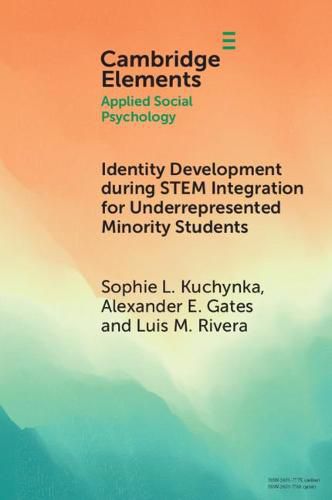Readings Newsletter
Become a Readings Member to make your shopping experience even easier.
Sign in or sign up for free!
You’re not far away from qualifying for FREE standard shipping within Australia
You’ve qualified for FREE standard shipping within Australia
The cart is loading…






Over the past three decades, research efforts and interventions have been implemented across the United States to increase the persistence of underrepresented minority (URM) students in science, technology, engineering, and math (STEM). This Element systematically compares STEM interventions that offer resources and opportunities related to mentorship, research, and more. We organize the findings of this literature into a multi-phase framework of STEM integration and identity development. We propose four distinct phases of STEM integration: Phase 1: High School; Phase 2: Summer before College; Phase 3: First Year of College; and Phase 4: Second Year of College through Graduation. We combine tenets of theories about social identity, stereotypes and bias, and the five-factor operationalization of identity formation to describe each phase of STEM integration. Findings indicate the importance of exploration through exposure to STEM material, mentorship, and diverse STEM communities. We generalize lessons from STEM interventions to URM students across institutions.
$9.00 standard shipping within Australia
FREE standard shipping within Australia for orders over $100.00
Express & International shipping calculated at checkout
Over the past three decades, research efforts and interventions have been implemented across the United States to increase the persistence of underrepresented minority (URM) students in science, technology, engineering, and math (STEM). This Element systematically compares STEM interventions that offer resources and opportunities related to mentorship, research, and more. We organize the findings of this literature into a multi-phase framework of STEM integration and identity development. We propose four distinct phases of STEM integration: Phase 1: High School; Phase 2: Summer before College; Phase 3: First Year of College; and Phase 4: Second Year of College through Graduation. We combine tenets of theories about social identity, stereotypes and bias, and the five-factor operationalization of identity formation to describe each phase of STEM integration. Findings indicate the importance of exploration through exposure to STEM material, mentorship, and diverse STEM communities. We generalize lessons from STEM interventions to URM students across institutions.